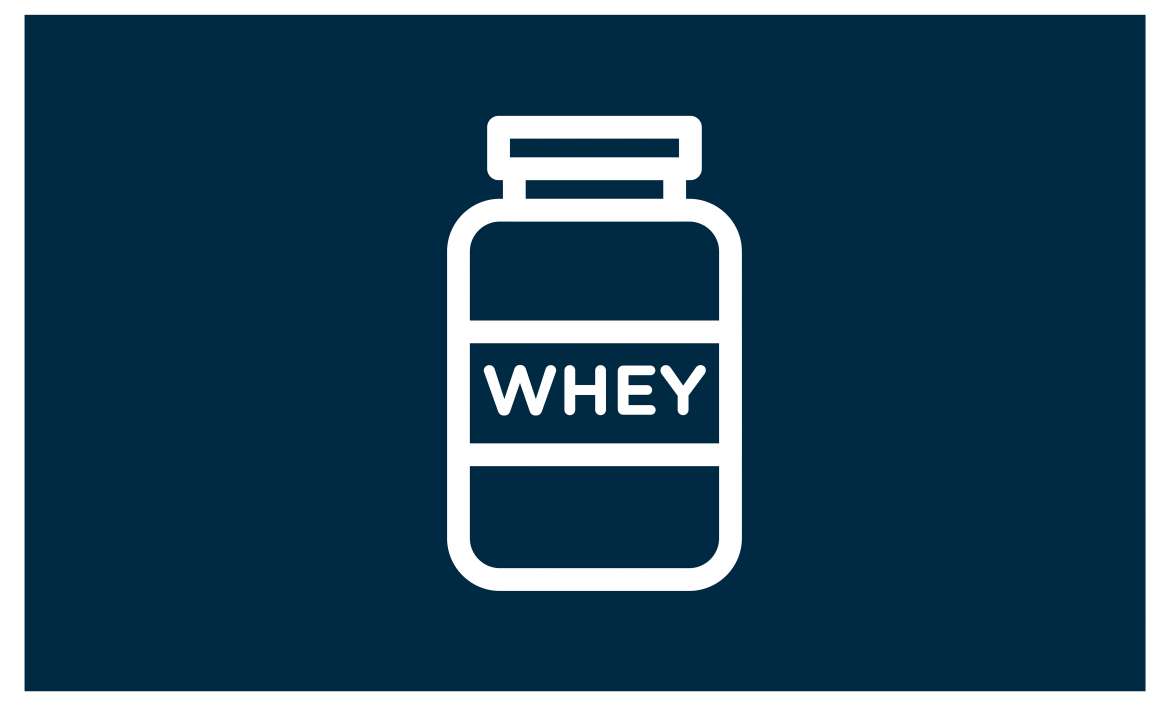Whey protein is probably the most popular type of protein supplement out if not the most popular type of all supplements out there. But even though it is so common and found pretty much around the world, many people are still confused as to what it is and how it works.
Whey is originally derived from milk, which is comprised of two proteins: casein, making up around 80 percent of all milk protein, and whey, making up only 20 percent. During the manufacturing of cheese, whey can be found in the liquid that is left over when you separate the solid parts.
Before you get your common whey protein powder, the liquid has to undergo some more processing and afterwards, what you are left with is the white powder that you can buy at the supplement store.
Like all proteins, whey is composed of amino acids, the building blocks of tissue and muscle growth. As an animal protein it is also high in all essential amino acids and a particularly good source of the three branched-chain amino acids (BCAAs), leucine, isoleucine, and valine, which are especially important in muscle growth.
What does whey protein do?
Your body requires more protein when you want to build muscle. Whereas the general recommended protein intake for the average adult should be anywhere from 0.4 to 0.5 grams per pound of bodyweight, someone looking to build muscle at the optimal rate should consume about double that.
While you can theoretically get all your necessary protein from whole food sources, consuming enough protein that way can be tricky, especially when you don’t have time to prepare high protein meals all the time. That is why most athletes and bodybuilders use protein powders in addition to a balanced diet. So if you are crunched for time, a good protein powder can really make your life easier.
Whey protein qualifies as a good protein powder because of several factors:
Main characteristics of whey protein
Digestibility
Whey is absorbed faster than other forms of protein, which means its available faster for protein synthesis and muscle growth. This makes it especially useful before or after your workout, but less before longer fasts, where you should favor a slower digesting protein like casein.
Amino acid profile
Like I said before, whey is high in all the nine essential amino acids, which we need to derive from food and cannot produce in the body. With 3 grams of leucine per 25-gram scoop of whey you also get a lot of the most important amino acids in muscle growth. Most other protein sources have less leucine.
Price & availability
Whey protein is the most common form of protein powder. Since every major supplement brand has one whey product on the market, there is a lot more competition.
This brings down prices and also means you will find a good whey protein powder in basically any supplement store around the world. Its low price and availability are also the reasons I recommend it for most beginners. There is not much you can do wrong here.
The 3 types of whey protein
There are three main types of whey protein products: Concentrates, isolates and hydrolysates.
Here’s how they are different from each other.
Whey Protein Concentrate
Whey concentrates is your most basic type of protein powder and contains around 70 to 80 percent protein. Even though whey is naturally low in lactose and fat, you will still find some in whey concentrates, which is why this type is not recommended for people who are lactose intolerant.
If you don’t have a problem with lactose digestion and want the cheapest whey available, go with a concentrate. It’s not inherently inferior to isolates but simply has been processed less.
Whey Protein Isolate
Whey protein isolate are whey concentrates, which have been further processed to remove basically all the fat and lactose. This is why your protein concentration reaches around 90 to 95 percent protein.
The higher degree of processing also increases its price and isolates can sometimes be double the price of a whey concentrate. For me its worth the money because I’m slightly lactose intolerant, but if you aren’t chances are you will do just fine with a whey concentrate (or a blend of concentrate and isolate).
Whey Protein Hydrolysate
Lastly, we have whey protein hydrolysate. This whey has been hydrolyzed or “pre-digested“, meaning the protein has already been partially been broken down. This will reduce digestion time compared to concentrates and isolates, but since whey is already a fast digesting protein, the advantage is minor.
Hydrolyzed whey also tends to taste bitter and is a lot more expensive than concentrate, so I don’t recommend it for beginners unless you have a special reason for it.
How should you take whey protein?
Your daily dose of whey protein, and protein supplements in general, will depend on how much total protein you need to consume per day. Like I mentioned earlier, 0.8 – 1 gram per pound of bodyweight works as a good rule of thumb.
But keep in mind that the majority of your diet should always be based on whole foods, which applies not only to protein but all macronutrients. So try to build your diet around quality protein sources and use protein powder only as a supplement and not as a substitute.
Depending on your lifestyle, required protein intake and willingness to cook I suggest you get around a third to half (maximum!) of your protein from protein shakes.
In regards to whey protein timing, it makes sense to take a regular dose of 25-30-gram, either 1 hour to 30 minutes before your workout or right after your workout.
That doesn’t mean you have to chug down your shake as soon as you get done with your last set. The myth of the “anabolic window” has basically been debunked. Anytime within an hour or two is usually fine.
Side effects
Whey protein is generally very safe. There are no studies showing that protein supplementation, or higher protein intake in general, can lead to kidney damage or bone loss if you are a healthy adult.
People with existing kidneys problems should talk to their doctor first, but anyone else shouldn’t worry about whey protein side effects.



